| News Archive |

|
2008: Jan Feb Mar Apr May Jun Jul Aug Sep Oct Nov Dec
2007: Jan Feb Mar Apr May Jun Jul Aug Sep Oct Nov Dec
2006: Jan Feb Mar Apr May Jun Jul Aug Sep Oct Nov Dec
2005: Jan Feb Mar Apr May Jun Jul Aug Sep Oct Nov Dec
2004: Jan Feb Mar Apr May Jun Jul Aug Sep Oct Nov Dec

News: May 2008
Back to latest news


|
Unearthing the grave of Cassiopeia A
By decoding ghostly echoes of light traveling away from the remains of supernova Cassiopeia A, scientists have pieced together what the star looked like in life and how it met its demise, the first time the life history of a supernova remnant in our Galaxy has been resurrected.
 FULL STORY FULL STORY
 |
 |
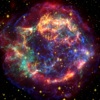 |
 |
Phoenix flexes robotic arm
NASA’s Mars lander has returned its first full 360 degree panoramic image from the frigid Martian surface, freed its long robotic arm in preparation for digging the icy plains, tested various instruments and transmitted its second weather report, all in a day’s work.
 FULL STORY FULL STORY
 |
 |
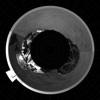 |
 |
Unveiling the chemical composition of Milky Way stars
Astronomers from the Sloan Digital Sky Survey (SDSS-II) have unveiled the most complete and detailed map yet of the chemical composition of more than 2.5 million stars in the Milky Way, allowing them to tackle many unsolved mysteries about the birth and growth of our Galaxy.
 FULL STORY FULL STORY
 |
 |
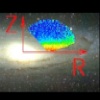 |
 |
Giant ring found circling monster magnetar
NASA’s Spitzer Space Telescope has found a bizarre ring of material around a rare and exotic stellar corpse, displaying a magnetic field trillions of times more intense than the Earth’s.
 FULL STORY FULL STORY
 |
 |
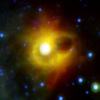 |
 |
Amateur astronomer discovers fastest rotator in the Solar System
A British amateur astronomer has discovered the fastest rotating asteroid in the Solar System as part of the Faulkes Telescope near-Earth asteroid project.
 FULL STORY FULL STORY
 |
 |
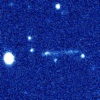 |
 |
VLT marks 10th anniversary with stunning nebula
To mark the occasion of the 10th anniversary of the Very Large Telescope’s (VLT) First Light, the European Southern Observatory (ESO) has released two stunning images of nebula located towards the Carina constellation.
 FULL STORY FULL STORY
 |
 |
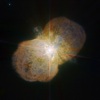 |
 |
HiRISE captures Phoenix descent
The HiRISE camera onboard NASA’s Mars Reconnaissance Orbiter captured the Phoenix lander hanging from its parachute during its descent through the Martian atmosphere, and imaged the lander after it had safely landed in the north polar region of Mars.
 FULL STORY FULL STORY
 |
 |
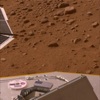 |
 |
New measurements reveal slimmer Milky Way
A more accurate measuring scale has refined the weight of the Milky Way by a factor of one trillion, a discovery that has broad implications for our understanding of the Milky Way.
 FULL STORY FULL STORY
 |
 |
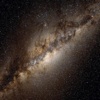 |
 |
Solar eruption seen in unprecedented detail
A fleet of solar-orbiting spacecraft observed the April 9 solar eruption in unprecedented detail, confirming previously unseen features that are predicted by computer models.
 FULL STORY FULL STORY
 |
 |
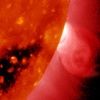 |
 |
Dust torus detected around supergiant star
Astronomers have taken the first close-up image of an individual dying supergiant star in our neighbouring galaxy, the Large Magellanic Cloud.
 FULL STORY FULL STORY
 |
 |
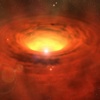 |
 |
Spectacular new colour view of Mars
Mission scientists are growing excited at the views of the Martian arctic presented in colour images beamed back to Earth from NASA's path-finding Phoenix spacecraft.
 FULL STORY FULL STORY
 |
 |
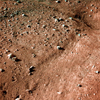 |
 |
First images arrive from Phoenix
About two hours after touching down NASA's Phoenix lander has returned the first images of the surface of Mars near the north pole. Check the status center for continuous updates.
 MISSION STATUS CENTER - live updates! MISSION STATUS CENTER - live updates!
 |
 |
 |
 |
NASA's Phoenix probe lands on Mars
NASA's Phoenix lander plunged into the martian atmosphere today at 12,700 mph and then used atmospheric friction, a large parachute and finally, 12 individuallly controlled rocket engines to complete an automated landing near the red planet's northern polar cap.
 FULL STORY FULL STORY
 MISSION STATUS CENTER - live updates! MISSION STATUS CENTER - live updates!
 SUNDAY AFTERNOON STORY SUNDAY AFTERNOON STORY
 LANDING PREVIEW STORY LANDING PREVIEW STORY
 LANDING TIMELINE LANDING TIMELINE
 |
 |
 |
| |
Phoenix prepares for Mars landing
Beginning this bank holiday Sunday evening, NASA’s Phoenix spacecraft will hurtle through the Martian atmosphere towards the surface, where it will begin a three month mission to study the habitability potential of the Martian arctic’s ice-rich soil.
 FULL STORY FULL STORY
 |
 |
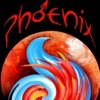 |
 |
New red spot appears on Jupiter
In what is beginning to look like a case of planetary measles, a third red spot has appeared alongside the Great Red Spot and Red Spot Junior in the turbulent Jovian atmosphere.
 FULL STORY FULL STORY
 |
 |
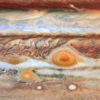 |
 |
Spirit finds hot spring-like deposits on Mars
Deposits of nearly pure silica discovered by the Mars Exploration Rover Spirit could have formed when volcanic steam and hot water percolated through the ground, mirroring the processes that occur at Earth’s Yellowstone National Park today.
 FULL STORY FULL STORY
 |
 |
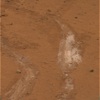 |
 |
Jupiter’s Little Red Spot breaks wind speed record
Using data from NASA’s New Horizons spacecraft, the Hubble Space Telescope and the ESO’s Very Large Telescope, a team of international scientists has found that Jupiter’s Little Red Spot (LRS) has some of the highest wind speeds ever detected on any planet.
 FULL STORY FULL STORY
 |
 |
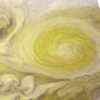 |
 |
Stellar death caught in the act
Thanks to a fortuitous observation with NASA’s Swift satellite, astronomers have caught a star in the act of exploding for the very first time, a major breakthrough in unravelling longstanding mysteries about how such explosions really work.
 FULL STORY FULL STORY
 |
 |
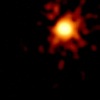 |
 |
ISS marathon begins tonight
The next few evenings will provide excellent opportunities for observing the International Space Station multiple times in one evening from locations in Europe in North America.
 FULL STORY FULL STORY
 |
 |
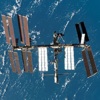 |
 |
Over 100 lunar impact explosions caught in the act
103 meteroids striking the lunar surface at speeds of around 50,000 kilometres per hour, capable of blasting craters a metre wide, have been caught on film by NASA scientists.
 FULL STORY FULL STORY
 |
 |
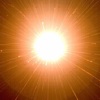 |
 |
Cassini maps of Saturn’s moons provide guideposts for future explorers
The Cassini Imaging Team has released to the public and scientific community a detailed atlas of Saturn’s tiny fractured moon Dione, the third in a series of atlases charting the enigmatic terrain of Saturn’s icy denizens.
 FULL STORY FULL STORY
 |
 |
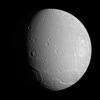 |
 |
The tiny star with a monster roar
The brightest flare ever seen from a normal star other than our Sun, worth thousands of solar flares, has been released from a star that shines with just one percent of the Sun’s light.
 FULL STORY FULL STORY
 |
 |
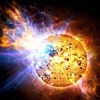 |
 |
Galaxy Zoo’s special exhibition of merging galaxies
Since Galaxy Zoo opened its gates almost a year ago, over 125,000 armchair astronomers have made around 40,000,000 individual classifications of elliptical, spiral and merging galaxies. Now the team are appealing to the public to review their set of possible merging galaxies in order to answer some long standing questions about the weird and wonderful world of interacting galaxies.
 FULL STORY FULL STORY
 |
 |
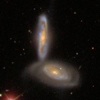 |
 |
A cold Martian interior
New observations from NASA’s Mars Reconnaissance Orbiter indicate that the crust and upper mantle of Mars is stiffer and colder than previously thought, implying that liquid water might be located at greater depths than originally suspected.
 FULL STORY FULL STORY
 |
 |
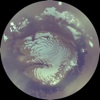 |
 |
Key molecule discovered in Venusian atmosphere
Venus Express has made the first detection of the molecule hydroxyl in the upper atmosphere of Venus, giving scientists a vital tool to unlock the mechanics of our sister planet’s dense atmosphere.
 FULL STORY FULL STORY
 |
 |
 |
 |
Are you made of the right stuff?
The European Space Agency opens its gates today for what is expected to be a deluge of applications in response to its latest recruitment drive for new talent to bolster its astronaut corps for future missions to the International Space Station, the Moon and beyond.
 FULL STORY FULL STORY
 |
 |
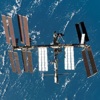 |
| |
| |
Rare quartet of stars aids stellar evolution models
Astronomers have discovered an extremely rare quartet of stars, disguised as a single speck of light even through some of the world’s most powerful telescopes, orbiting each other within a region smaller than Jupiter’s orbit round the Sun.
 FULL STORY FULL STORY
 |
 |
 |
 |
Astronomers double brightness of the Universe
Astronomers have turned up the brightness of the Universe in a discovery showing that interstellar dust is obscuring roughly half of the light that the Universe is currently generating.
 FULL STORY FULL STORY
 |
 |
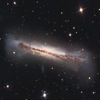 |
 |
Eccentric pulsar puzzles scientists
Astronomers have discovered a rapidly spinning pulsar in an eccentric orbit around a Sun-like star, a never before seen combination, and one that raises questions as to how such a strange system could develop.
 FULL STORY FULL STORY
 |
 |
 |
 |
Astronomers find youngest supernova remnant in the Milky Way
The youngest supernova in our Galaxy has been discovered by tracking the rapid expansion of its remains using the Very Large Array (VLA) and the Chandra X-ray observatory.
 FULL STORY FULL STORY
 |
 |
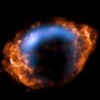 |
 |
Microsoft opens windows to the Universe
Exploding stars, colliding galaxies and a grand tour of the Solar System are just a mouse click away thanks to Microsoft’s WorldWide Telescope (WWT), a free tool that combines high resolution images from the best ground and space based observatories to bring the wonders of the Universe to your desktop computer.
 FULL STORY FULL STORY
 |
 |
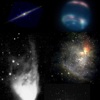 |
 |
Taking the temperature of the cosmic background
Using ESO’s Very Large Telescope, astronomers have made the first detection of a carbon monoxide molecule in a galaxy almost 11 billion light years away, a feat that has resulted in the most precise measurement of the cosmic temperature at such a remote epoch.
 FULL STORY FULL STORY
 |
 |
 |
 |
Antennae Galaxies closer than you think
New research from Hubble shows that the Antennae Galaxies, an interacting pair that are used as a standard against which to validate theories about galaxy evolution, are 20 million light years closer than previously thought.
 FULL STORY FULL STORY
 |
 |
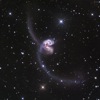 |
 |
Iron 'snow' helps maintain Mercury’s magnetic field
Just like snowflakes form in the Earth’s atmosphere and drift to the ground, new scientific evidence suggests that deep inside the planet Mercury, iron “snow” forms and falls toward the centre of the planet, and could be responsible for Mercury’s magnetic field.
 FULL STORY FULL STORY
 |
 |
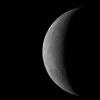 |
 |
Found: Part of the Universe’s missing matter
Using ESA’s orbiting X-ray observatory XMM-Newton, a team of international astronomers has uncovered part of the missing matter of the Universe, in a filament of gas connecting two galaxy clusters.
 FULL STORY FULL STORY
 |
 |
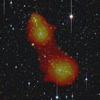 |
 |
Astronomers discover new breed of star
Using the 2.1 metre Otto Struve Telescope at McDonald Observatory, astronomers at the University of Texas have predicted and confirmed the existence of a new type of variable star: a pulsating carbon white dwarf.
 FULL STORY FULL STORY
 |
 |
 |
 |
Stellar time bomb makes scheduled explosion
Using observations from NASA’s Rossi X-ray Timing Explorer (RXTE), an international team of astronomers has discovered a timing mechanism that allows them to predict exactly when a neutron star will unleash its wrath.
 FULL STORY FULL STORY
 |
 |
 |

Back to latest news |
 |

